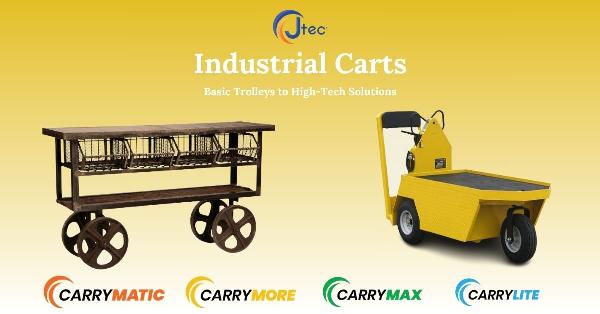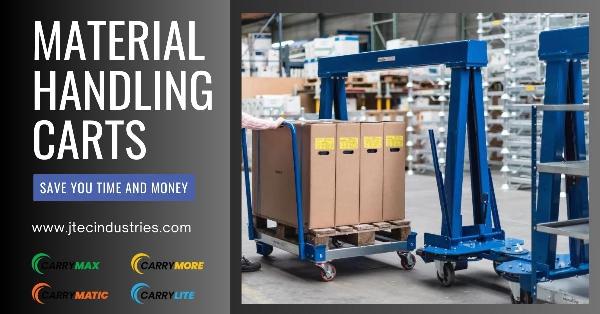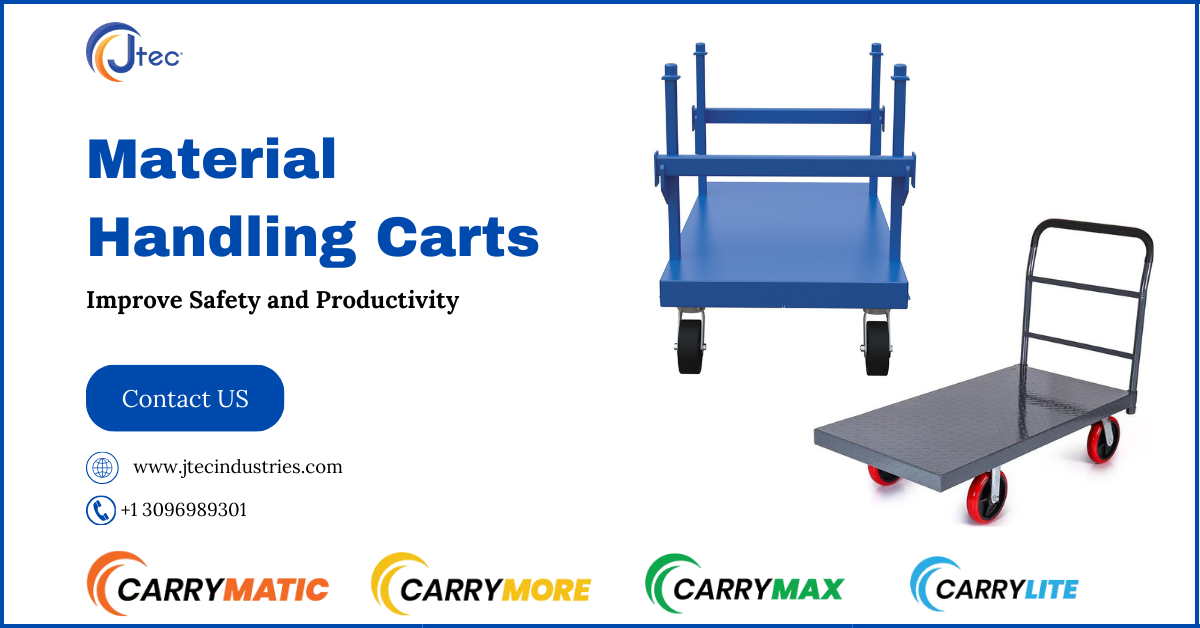 Guaranteed SEO Boost: Triple Your Rankings with Backlinks starting at 5$
Guaranteed SEO Boost: Triple Your Rankings with Backlinks starting at 5$
How to Select the Best Industrial Tugger Carts for Your Needs
Written by Jtec Industries » Updated on: October 14th, 2024
Industrial tugger carts have become essential tools in industries like manufacturing, warehousing, and logistics for optimizing material handling. Whether moving raw materials, finished goods, or heavy equipment, tugger carts streamline transportation, reduce labor demands, and improve workflow efficiency. Selecting the best tugger cart for your specific operation requires careful consideration of various factors to ensure it meets your operational needs, safety standards, and budget.
1. Evaluate Load Requirements
When choosing an industrial tugger cart, the most essential factor is your load requirements. Different operations have varying load capacities, shapes, and sizes, so it is essential to pick a cart that fits your material handling needs.
- Weight Capacity: Industrial tugger carts are available in various weight capacities, typically ranging from 500 pounds to several tons. Make sure the cart you choose is designed to handle the maximum weight of your loads without straining the equipment. Overloading can lead to breakdowns, increased maintenance costs, and safety hazards.
- Size and Shape of Loads: In addition to weight, consider the size and shape of what you’re transporting. If your loads are bulky, ensure the cart has a large enough platform. For delicate items, look for carts with cushioned surfaces or tie-down points to prevent damage.
2. Consider the Type of Material Flow
Another critical factor is the flow of materials through your facility. Understanding the nature of your material handling processes will influence the type of tugger cart best suited for your needs.
- Single-Cart vs. Train Cart Systems: You might need either a single tugger cart or a train system with multiple linked carts, depending on your operations. Train systems are more efficient in larger facilities where you need to move many items at once. They can reduce trips, helping to improve workflow, especially in high-volume production.
- Frequency of Use: Consider how often the industrial tugger carts are used. For continuous, heavy-duty use, opt for carts made from durable materials, such as high-strength steel, to ensure long-term durability. Lightweight carts made of aluminum or plastic might be more suitable for less frequent or lighter loads.
3. Understand the Cart Maneuverability
Maneuverability is key to improving efficiency, especially in confined spaces like warehouses or production floors. The design and structure of the tugger cart can have a significant impact on its ease of movement.
- Caster Types: The type of casters affects how easy the cart is to move. Swivel casters allow for better control, while rigid casters are stable for straight paths. For bumpy floors, shock-absorbing or pneumatic casters help keep things smooth.
- Turning Radius: If your facility has narrow aisles or tight corners, selecting a tugger cart with a small turning radius is essential. Train cart systems often have a more significant turning radius, so it’s important to evaluate the layout of your workspace when deciding on the type of cart.
- Floor Surface: Different wheels are designed for different types of floor surfaces. Standard rubber wheels may suffice, while rougher surfaces, like outdoor pavement or uneven flooring, may require heavy-duty or all-terrain wheels for smooth warehouse floors.
4. Choose Between Manual and Powered Carts
Depending on your operation’s complexity, you may need to decide between manual and powered tugger carts.
- Manual Tugger Carts: Industrial tugger carts are more affordable and rely on physical effort or a towing vehicle to move materials. They are suitable for lighter loads and shorter distances. Manual carts may be sufficient if your operation involves minimal material transport or lighter products.
- Powered Tugger Carts: Powered industrial tugger carts may cost more, but they greatly improve efficiency when moving heavy loads over long distances. They help reduce worker strain and injury risk while boosting productivity. Many models have advanced features like regenerative braking, automatic safety systems, and remote control, which enhance control and safety.
5. Examine the Durability and Build Quality
The lifespan of your tugger cart depends on its build quality and materials. Heavy-duty carts need vital construction to handle wear and tear.
- Materials: Tugger carts are usually made from steel, aluminum, or high-density plastic. Steel is good for heavy loads but can make the cart heavier. Aluminum is a good balance of strength and weight, suitable for medium loads. Plastic carts are lightweight and best for lighter loads or where minimizing weight is important.
- Corrosion Resistance: If your operation involves harsh environments, such as exposure to chemicals or outdoor use, select carts with corrosion-resistant coatings or materials like stainless steel.
- Maintenance Requirements: Durable tugger carts generally require less maintenance, but it’s vital to consider the cost and availability of replacement parts. Carts with complex mechanisms, especially powered ones, may require more regular maintenance. Look for models with a solid reputation for reliability and low-maintenance designs.
6. Safety Features
Safety is vital in any industrial setting, and your tugger cart should have appropriate safety features to minimize risks to workers and the equipment itself.
- Braking Systems: Carts that carry heavy loads or operate on slopes should have reliable braking systems to prevent accidents. Powered carts, in particular, may feature automatic brakes that engage when the cart stops moving.
- Safety Guards: Look for models with protective guards or railings to prevent items from falling off the cart during transportation. It is especially important in high-speed or high-volume environments.
- Visibility: Industrial tugger carts are designed with high-visibility features such as bright colors or reflective surfaces, reducing the risk of collisions in busy facilities.
7. Customization Options
Finally, many manufacturers offer customizable industrial tugger carts to better fit your specific needs. Customization options include platform size, shelving units, adjustable height settings, and specialized features like drawers or compartments for organizing tools and equipment. Investing in a cart tailored to your workflow can significantly enhance efficiency and productivity.
Conclusion
Selecting the best industrial tugger cart for your needs involves a careful assessment of your load requirements, facility layout, material flow, and safety standards. By considering factors such as weight capacity, maneuverability, powered vs. manual options, and durability, you can make a well-informed decision that boosts efficiency and ensures a safer working environment.
Disclaimer:
We do not claim ownership of any content, links or images featured on this post unless explicitly stated. If you believe any content or images infringes on your copyright, please contact us immediately for removal ([email protected]). Please note that content published under our account may be sponsored or contributed by guest authors. We assume no responsibility for the accuracy or originality of such content. We hold no responsibilty of content and images published as ours is a publishers platform. Mail us for any query and we will remove that content/image immediately.
Copyright © 2024 IndiBlogHub.com. Hosted on Digital Ocean







